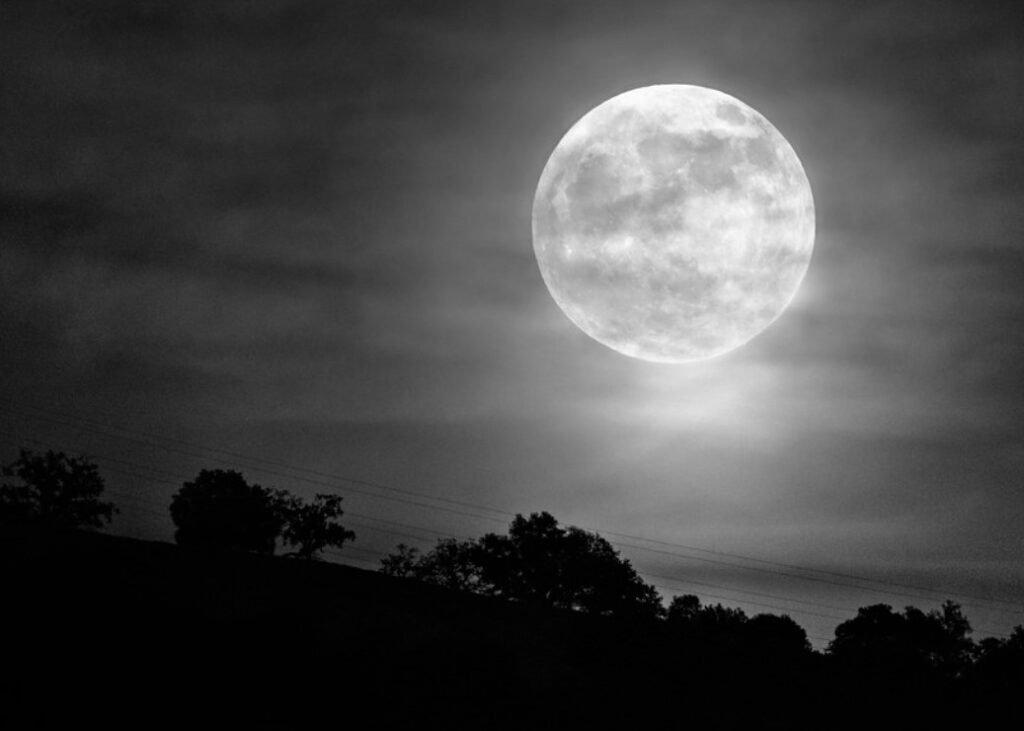The last full moon of 2023 will grace the night sky this weekend, offering a spectacular sight for skywatchers across the world. The full beaver moon will reach its peak on Monday, November 27, at 4:16 a.m. EST, but it will appear full from Saturday night to Tuesday morning.
The full moon of November has several names, but the most common one is the beaver moon. This name comes from the Native American and colonial traditions, as this was the time of year when beavers were active and preparing for winter. Trappers also set their traps before the water froze to catch beavers and obtain their valuable fur.

Other names for the November full moon include the frost moon, the freezing moon, the snow moon, and the oak moon. These names reflect the changing weather conditions and the onset of winter in the northern hemisphere.
How to watch the full beaver moon
The full beaver moon will rise in the east after sunset on Sunday, November 26, and will set in the west before sunrise on Monday, November 27. The best time to view it will be when it is near the horizon, as it will appear larger and more colorful due to the atmospheric effects.
To enjoy the full beaver moon, you don’t need any special equipment or skills. Just find a clear and dark spot away from city lights and look up at the sky. You can also use a pair of binoculars or a telescope to see more details of the lunar surface, such as craters, mountains, and valleys.
If you want to take photos of the full beaver moon, you will need a camera with a tripod and a telephoto lens. You can also use a smartphone with a zoom function, but the quality may not be as good. To capture the best shots, you will need to adjust the exposure, focus, and white balance settings of your camera or phone. You can also use a timer or a remote control to avoid shaking the camera.
What else to look for in the night sky
The full beaver moon is not the only celestial attraction in the night sky this weekend. You can also spot some bright planets and stars, as well as a few meteors from the Leonid and Geminid showers.
- Venus: The brightest planet in the sky will be visible in the southwest after sunset, shining like a brilliant star. You can easily see it with your naked eye, but if you use a telescope, you may be able to see its crescent phase.
- Jupiter: The largest planet in the solar system will be visible in the south after sunset, next to the constellation of Aquarius. You can see it with your naked eye, but if you use a telescope, you may be able to see its four largest moons: Io, Europa, Ganymede, and Callisto.
- Saturn: The ringed planet will be visible in the south after sunset, near the constellation of Capricornus. You can see it with your naked eye, but if you use a telescope, you may be able to see its rings and some of its moons, such as Titan, Rhea, and Dione.
- Mars: The red planet will be visible in the southeast before dawn, near the constellation of Virgo. You can see it with your naked eye, but if you use a telescope, you may be able to see some of its surface features, such as volcanoes, canyons, and polar caps.
- Antares: The brightest star in the constellation of Scorpius will be visible in the south after sunset, below Jupiter and Saturn. It is a red supergiant star that is about 700 times larger than the sun. You can see it with your naked eye, but if you use a telescope, you may be able to see its companion star, Antares B, which is a blue-white star.
- Spica: The brightest star in the constellation of Virgo will be visible in the southeast before dawn, above Mars. It is a blue-white star that is about 260 times brighter than the sun. You can see it with your naked eye, but if you use a telescope, you may be able to see that it is actually a binary star system, consisting of two stars that orbit each other.
- Leonids: The annual meteor shower that peaks in mid-November will still be active until the end of the month, producing a few shooting stars per hour. The best time to watch them will be after midnight, when the moon is low in the sky. The meteors will appear to radiate from the constellation of Leo, but they can be seen anywhere in the sky.
- Geminids: The annual meteor shower that peaks in mid-December will start to become visible by the end of November, producing a few shooting stars per hour. The best time to watch them will be after midnight, when the moon is low in the sky. The meteors will appear to radiate from the constellation of Gemini, but they can be seen anywhere in the sky.
Don’t miss this opportunity to witness the beauty and wonder of the full beaver moon and the night sky this weekend. You will be amazed by what you can see with your eyes and your camera.
